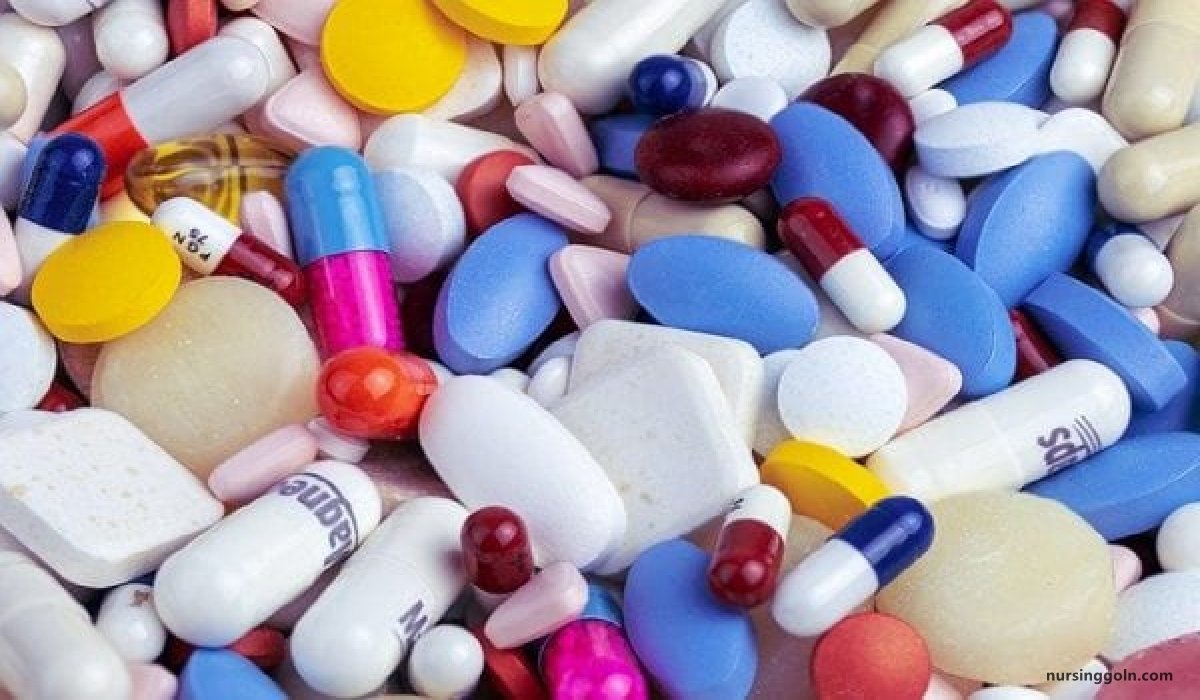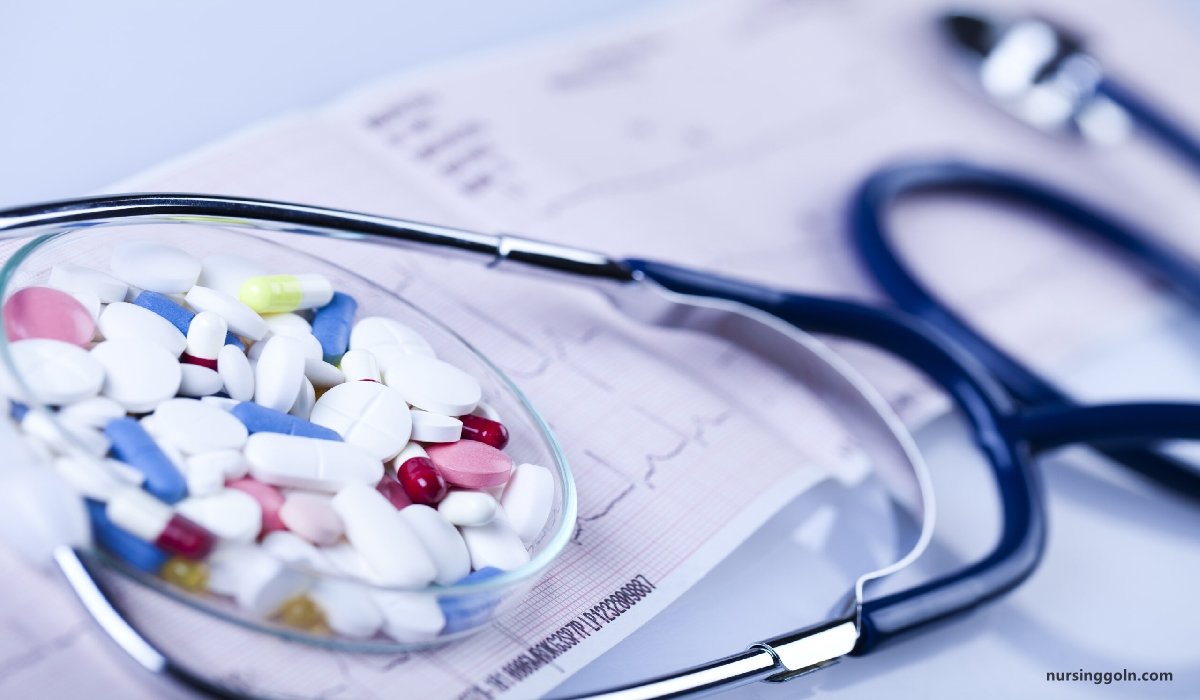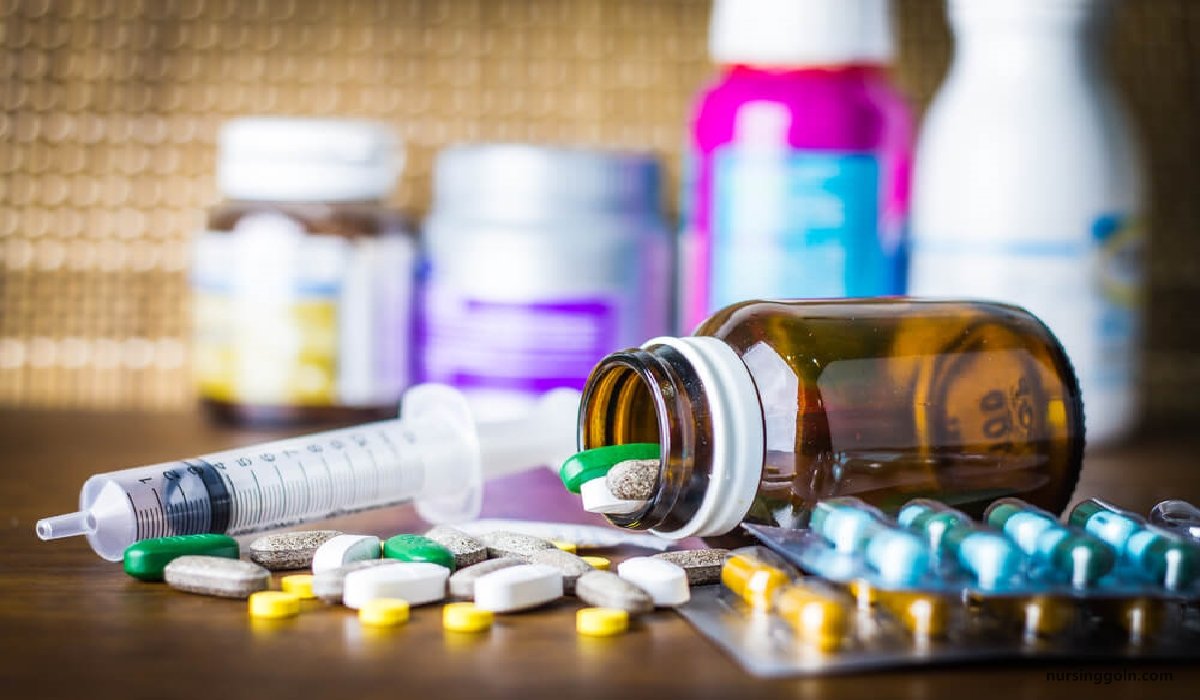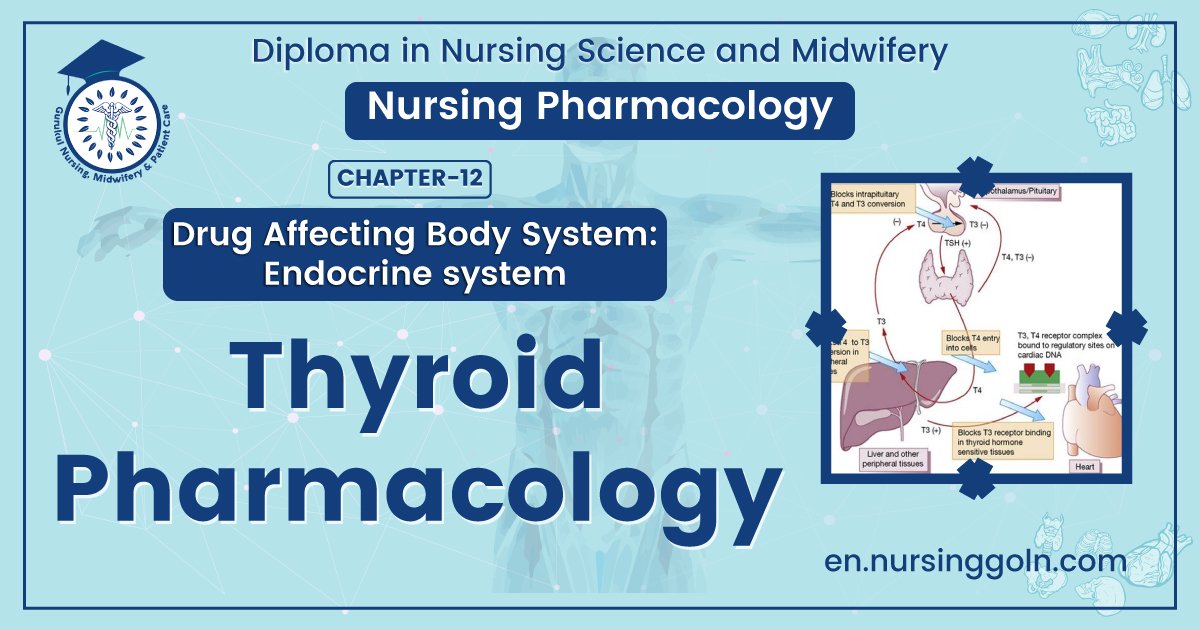Drug absorption – This book covers the entire syllabus of “Pharmacology” prescribed by BNMC- for diploma in nursing science & midwifery students. We tried to accommodate the latest information and topics. This book is an examination set up according to the teachers’ lectures and examination questions.
At the end of the book, previous questions are given. We hope in touch with the book students’ knowledge will be upgraded and flourish. The unique way of presentation may make your reading of the book a pleasurable experience.

Drug absorption
Transport of drug along the cell membrane and available for, distribution is called absorption. All pharmacokinetic processes involve transport of the drug across biological membranes.
Absorption depends on:
1. Properties of cell membrane.
2. Physiochemical properties of drugs:
- Acidic or alkaline drug.
- Ionised or unionised drug.
- Water or lipid soluble drug.
- Polar or non-polar compound drug
Sites of Drug Absorption:
| Site | Mode of absorption |
| GIT | Stomach:
Small intestine:
Rectum
|
| Lungs | Absorption is rapid due to high surface area of the alveoli and high vascular supply of the lung. |
| Skin | Absorption occurs by passive process |
| Muscle |
|
| Subcutaneous tissue |
|
Important points regarding drug absorption
1. Unionised drug is lipid soluble; so absorbed through lipid layer.
2. Ionised drug is water-soluble; so not absorbed through lipid layer.
3. In acidic PH acidic drug is less ionised; so better absorption.
4. In alkaline PH basic drug is less ionised; so better absorption. (in acidic drug poisoning alkalisation of urine is done for excretion of acidic drug (ionisation more, so not reabsorbed in renal-tubules) and opposite is done for alkaline drug poisoning):
5. The degree of ionisation influences lipid solubility (and hence diffusibility) & so affects absorption, distribution and elimination.
Biological membrane
Biological membrane / biological membrane:
All types of cell membrane of the body are the biological membranes. This is introduced by Singer & Nicholson in 1972.
Important physiological barriers:
- Blood-brain barriers.
- Blood-placental barrier.
Characteristics
a. Thickness: 80-100 Aº (8-10 nm).
b. Structure:
- Lipid bilayer (phospholipid & cholesterol): Extrinsic & intrinsic protein.
- Embedded/interspersed protein: Glycoproteins.
- Aqueous pores / protein aqueous pores (4 Aor 04 nm).
Distribution of biological membranes: Present in all capillaries except cerebral capillary and GIT.
- The brain contains ‘blood-brain barrier (BBB)’.
- In GIT, tight junctions present which link adjacent epithelial or endothelial cells. The jejunum contains many such channels hence called leaky epithelia.
Blood-Brain Barrier (BBB):
1. This barrier exists between the plasma and the extracellular space of the brain.
2. Only lipid soluble drugs readily penetrate the BBB.
Structures of blood brain barrier (BBB):
1. Capillary endothelial cells of brain. Tight junctions between the endothelial cells are responsible for its high selectivity.
2. A continuous basement membrane surrounding the capillary.
3. The foot processes of the astrocytes.
4. Tight junctions between the endothelial cells.
Significance blood-brain barrier (BBB):
1. It is absent in children under 5 years.
2. It is also absent chemoreceptor trigger zone (CTZ) in the medulla oblongata & anterior hypothalamus. So, even lipid-insoluble drugs are emetic.
3. Efflux pump present in BBB returns ion in circulation from CSF.
Selective permeability of substance:
1. Water soluble drugs (e.g. Streptomycin, Neostigmine) cannot enter into CNS.
2. Lipid soluble drugs (e.g. Propofol, Propranolol) readily enter into the brain.
3. Gases and water pass readily through the barrier.
4. Glucose and electrolytes pass more slowly.com
5. Compounds with molecular weight of ≥ 60000 remain cant cross BBB.
6. It almost impermeable to plasma proteins & other large organic molecules.
[Ref- Bennett, Brown/9/98+ Tripathi/7/10-11]
Process of Drug Absorption:
1. Passive transport
- Simple diffusion (99%)
- Filtration (insignificant)
2. Specialized transport process:
- Active transport (17%).
- Carrier mediated facilitated diffusion.
- Exchange diffusion &
- Pinocytosis.
Passive Transport
The drug diffuses across the membrane in the direction of its concentration gradient, the membrane playing no active role in the process.
This is the most important mechanism for majority of drugs; drugs are foreign substances (xenobiotics), and specialized mechanisms are developed by the body primarily for normal metabolites.
Lipid soluble drugs diffuse by dissolving in the lipoidal matrix of the membrane, the rate of transport being proportional to the lipid: water partition coefficient of the drug. A more lipid- soluble drug attains higher concentration in the membrane and diffuses quickly. Also, greater the difference in the concentration of the drug on the two sides of the membrane, faster is its diffusion.
Passive transport required no energy. Transport occurs by:
- Dissolving in the membrane substance, that is diffusion.
- Passing through aqueous pores of the cell membrane, that is filtration.

Simple diffusion
It refers simply to the natural tendency of any substances to move from an area of high concentration to one of low concentration.
Aqueous diffusion-Aqueous diffusion occurs within the larger aqueous compartments of the body (interstitial space, cytosol, etc) and across epithelial membrane tight junctions and the endothelial lining of blood vessels through aqueous pores that-in some tissues-permit the passage of molecules as large as MW 20,000-30,000.
Aqueous diffusion of drug molecules is usually driven by the concentration gradient of the permeating drug, a downhill movement described by Fick’s law (see below). Drug molecules that are bound to large plasma proteins (eg, albumin) do not permeate most vascular aqueous pores. If the drug is charged, its flux is also influenced by electrical fields (eg, the membrane potential and in parts of the nephron-the transtubular potential).
Lipid diffusion-Lipid diffusion is the most important limiting factor for drug permeation because of the large number of lipid barriers that separate the compartments of the body. Because these lipid barriers separate aqueous compartments, the lipid: aqueous partition coefficient of a drug determines how readily the molecule moves between aqueous and lipid media.
In the case of weak acids and weak bases (which gain or lose electrical charge-bearing protons, depending on the pH), the ability to move from aqueous to lipid or vice versa varies with the pH of the medium, because charged molecules attract water molecules. The ratio of lipid-soluble form to water- soluble form for a weak acid or weak base is expressed by the Henderson-Hasselbalch equation (described in the following text).
Criteria of simple diffusion:
1. Diffusion shows first order kinetics e.g. diffusion rate is proportional to the concentration difference across the cell membrane.
2. Cellular energy is not required.
3. The process does not become saturated and is not inhibited by other substances.
4. It depends on size of particles.
First order kinetics
A constant fraction of drug is absorbed in each constant period after administration of drug to any route except I.V, is called first order kinetics.
Zero order kinetics
A constant amount of drug (e.g. 10070) is absorbed in a particular time after IV administration, is called zero order kinetics.
Fick’s Law of Diffusion
Flux (molecules per unit time) =
Area x Permeability coefficient
(C-C) x—————————————-
Thickness
The passive flux of molecules down a concentration gradient is given by Fick’s law:
Where C1 is the higher concentration, C2 is the lower concentration, area is the cross-sectional area of the diffusion path, permeability coefficient is a measure of the mobility of the drug molecules in the medium of the diffusion path, and thickness is the length of the diffusion path.
In the case of lipid diffusion, the lipid:aqueous partition coefficient is a major determinant of mobility of the drug because it determines how readily the drug enters the lipid membrane from the aqueous medium.

According to Fick’s law
1. Greater the concentration gradient, greater the rate of absorption.
2. Larger the absorption area, greater the drug flux.
3. Diffusion constant is proportional to temperature and inversely related to the molecular size.
4. Greater the lipid-water partition, greater the drug flux.
Filtration:
It is the process by which low molecular weight, water soluble drugs cross the biological membrane through the pores as a result of Osmotic or hydrostatic pressure difference across the membrane.
Sites of filtration
- Glomerulus of kidney
- Capillaries
Filtration depends on
- Size of molecule (40A-400A can cross)
- Bulk flow of water
Examples: Urea, alcohol, oxytocin, propranolol, glycerol, etc.
criteria of Active process of drug absorption.
Active Transport
Process by which a drug crosses the biological membrane by the help of carrier against the concentration gradient with the expenditure of energy.
Criteria of active transport
- Occurs against the concentration gradient.
- It exhibits selectivity & saturability.
- Carrier mediated & enzyme dependent.
- Competitive inhibition may occur.
- Metabolic inhibition can block it.
- More rapid transfer than by simple diffusion
Site of drug absorption by active transport
- Amino acid.
- Electrolytes
- Iron, Iodide
- Levodopa
- Methyldopa
- Methotrexate

Endocytosis and exocytosis:
This type of absorption is used to transport drugs of exceptionally large size across the cell membrane. Endocytosis involves engulfment of a drug by the cell membrane and transport into the cell by pinching off the drug filled vesicle. Exocytosis is the reverse of endocytosis.
Many cells use exocytosis to secrete substances out of the cell through a similar process of vesicle formation. Vitamin B12 is transported across the gut wall by endocytosis, whereas certain neurotransmitters (for example, norepinephrine) are stored in intracellular vesicles in the nerve terminal and released by exocytosis.
Exchange diffusion
Example: in distal convoluted tubule of kidney Nat is reabsorbed by exchange diffusion, in exchange of H+ or K+.
Facilitated diffusion
The transporter, belonging to the super-family of solute carrier (SLC) transporters, operates passively without needing energy and translocates the substrate in the direction of its electrochemical gradient, i.e. from higher to lower concentration.
It depends on:
- Difference in concentration of drugs on two sides of membrane.
- The amount of carrier available.
- Rapidity of chemical reaction between the drug & carrier.
Criteria of (carrier mediated) facilitated diffusion
1. It is a saturable process.
2. It is carrier mediated.
3. It is not energy dependent process.
4. Transfer along the concentration gradient (higher to lower).
Factors Modifying Drug Absorption
A. Factors related to drug
B. Factors related to GIT.
C. Factors affecting absorption from parenteral sites (except intravenous route).
D. Factors affecting absorption from the surface (skin, mucous membrane).
A. Factors related to drug
1. Molecular size:
➤ Colloids less rapidly absorbed
➤ Crystalloid rapidly absorbed
2. Chemical state
➤ Ionised drugs are lipid insoluble, so slowly absorbed
➤ Unionised drugs are lipid soluble, so rapidly absorbed.
3. Physical state:
➤Solids slowly absorbed
➤ Liquid rapidly absorbed
4. Solubility:
➤ Lipid soluble drugs are absorbed more rapidly
➤Water soluble drugs are absorbed rapidly
5. Concentration of the drug
➤ High concentration rapidly absorbed
➤Low concentration slowly absorbed.
B. Factors related to GIT:
1. Gastrointestinal PH:
➤ Acidic PH acidic drug being nonionised; so increase absorption of acidic drug (paracetamol).
➤ Alkaline PH: alkalic drug being nonionised; so more absorption (diazepam).
2. Presence of food in the GIT:
➤ Food interferes with absorption of water-soluble drugs (ampicillin, doxycycline, isoniazide). On the other hand high lipid soluble drugs are better absorbed in the presence of food (griseofulvin, propranolol).
3. Gastrointestinal motility:
➤ Increase motility (parasympathetic stimulation, diarrhoea) causes decrease absorption of the drug.
➤ Slow gastric emptying: more absorption.
➤ Rapid gastric emptying: less absorption.
➤ Increase bowel movement: decrease absorption.
4. Blood supply to the absorptive area:
➤ Stomach: less than intestine; so less absorption.
➤ Intestine: more absorption.
5. Total surface area available for absorption:
➤ Stomach: less surface area: less absorption.
➤ Intestine: large surface area: more absorption
6. Gastrointestinal disease:
➤ Gastrointestinal disease modify drug absorption are malabsorption syndrome, coeliac disease, Chon’s disease, etc.
7. Physiochemical interactions in the GIT:
➤ Warfarin + Bile acids = Reduce warfarin absorption.el
➤ Tetracycline + Ca++ = Decrease absorption of tetracycline by chelation.
C. Factors affecting absorption from parenteral sites (except I/V)
1. Blood flow to the absorption area:
➤ Muscle (IM): More blood flow, so more absorption
➤ Subcutaneous tissue (SC): Less blood flow as fatty tissue is poorly vascularised, so less absorption.
2. Site of injection:
➤I.M: Rapidly absorbed than subcutaneous site (absorption pattern: I.M > S.C > Oral)
3. Dosage formulation:
➤ Drug in aqueous solution: Rapid absorption.
➤ Slow release preparation: Slowly absorbed.
➤ Drug with vasoconstrictor. Slowly absorbed
4. Application of head, massages increase absorption of drug from the site of administration.
5. Area of absorptive surface.
Factors modifying absorption from the skin
1. Thickness of the skin.
2. Concentration gradient of the drug.
3. Surface area: more surface area more absorption
4. Blood supply to the respective area.
5. Lipid/water partition co-efficient of the drug.

D. Methods For Delaying Drug Absorption
1. Subcutaneous implantation of solid pellets: To achieve slow and continuous absorption of certain steroid hormones [e.g. oestradiol, Deoxycorticosterone and testosterone, lavonorgesterone (norplant)l this method is used
2. Administration of “slow release” form of the drug (salt, ester or complex): Procaine penicillin is a salt of penicillin which is only slightly water-soluble; when injected as an aqueous suspension it is slowly absorbed & exert a prolong action.
3. By addition of vasoconstrictor. Local anaesthetic + adrenaline. Adrenaline reduces absorption of local anaesthetic by causing vasoconstriction (decrease blood flow).
4. Changing the physical properties of a preparation: The addition of zinc to insulin (insulin zinc suspension) provides prolong action of insulin.
Read more:
